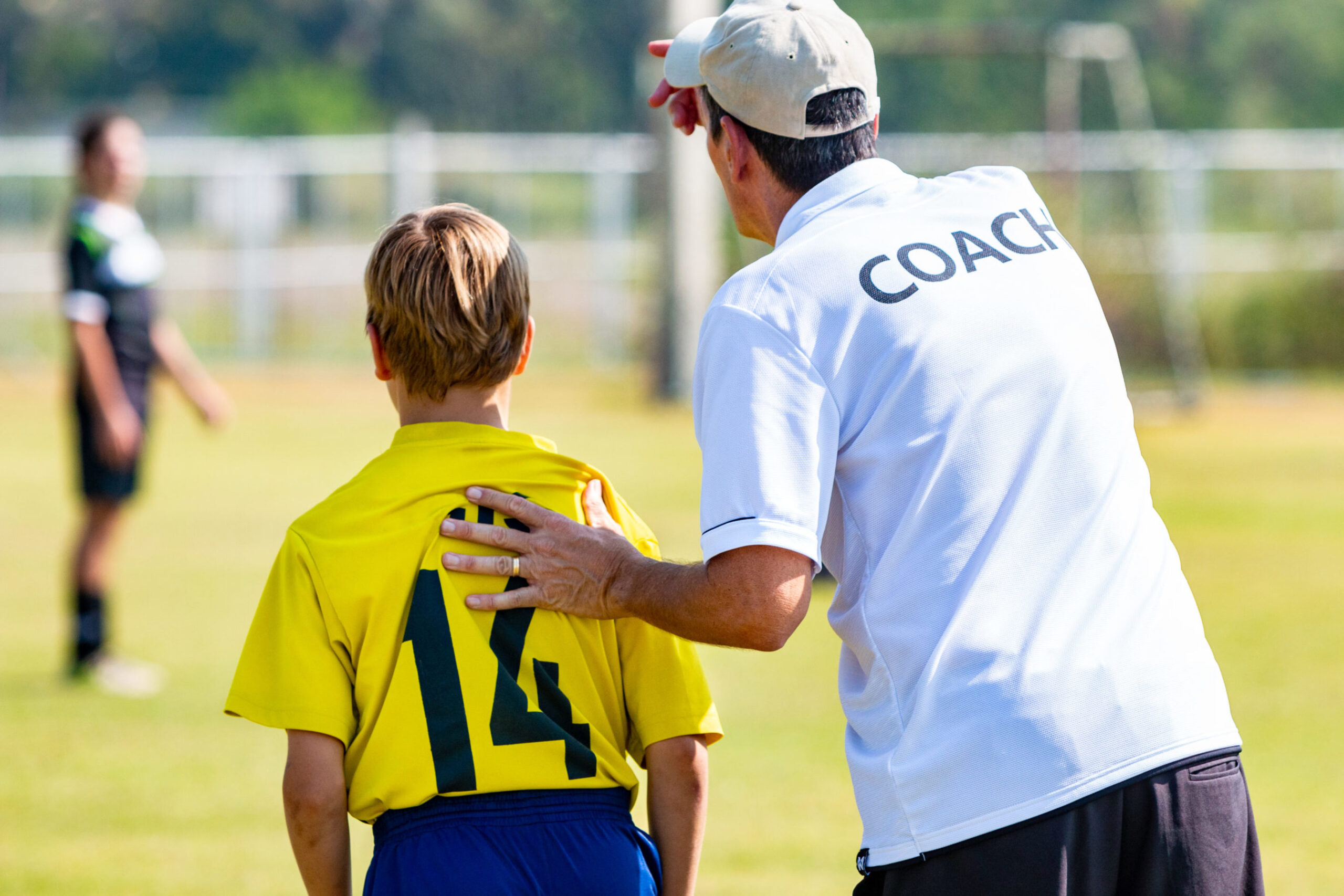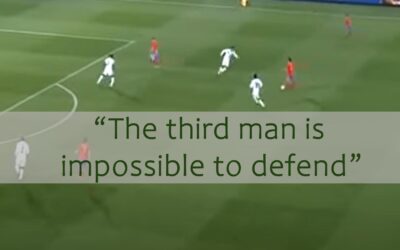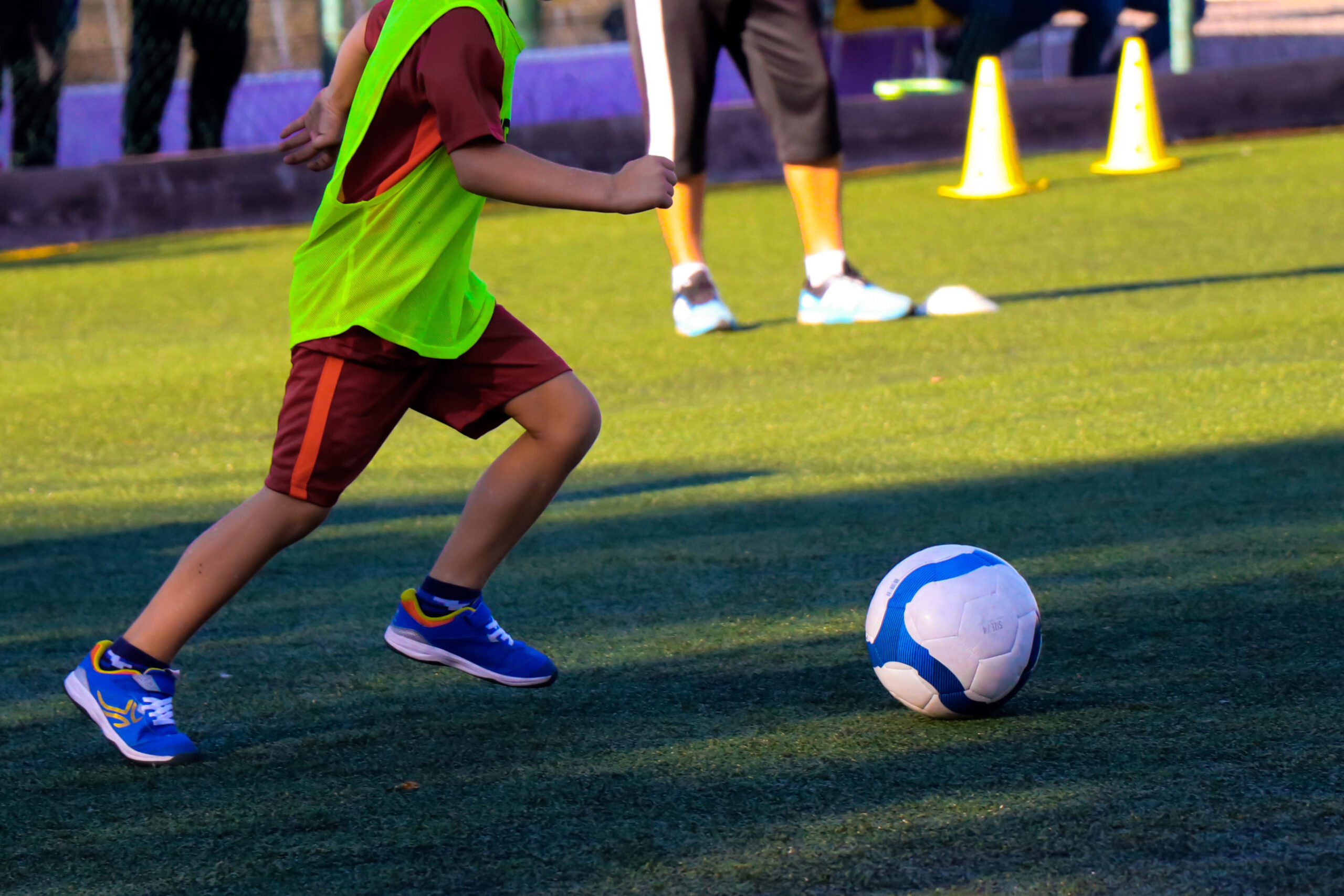Definition: Free spaces are those empty places in the field left alone previously by a partner of the possessor of the ball and the opponent who marks him (or who watches).
We can observe three phases:
- Creation: field zone where player of attacking team moves to another zone of the field and the player that marks him follows
- Occupation: an attacker moves to the newly created free zone
- Taking advantage: The possessor of the ball passes the ball to the partner who has just occupied the free space
It is important to emphasize that in the first phase, the creation, we must attract with us the defender, if we lose the marker we will be leaving the defender in the zone that we want to freed.
Objectives of free spaces:
- Game Progression: regardless of the position we are, we generally think of creating free spaces only against a withdrawn defense, but it will be equally important (or more) to do so in the face of a rival high pressure in the entire field.
- Provoke a change of pace: Once we generate, occupy and take advantage of the free space, we will be able to make a change of pace with different purposes (switching the play, advance, seek finishing, exit pressure, etc…)
- Retaining the ball: if we want to maintain possession these spaces and their use will be necessary.
What’s needed to generate free spaces?
As in many of the offensive principles we will need mobility of the players without the ball.
We will also need our players not to look only at the ball but to see the movements of the teammates and the opening of these spaces.
Identify the moments of the movements of players without ball, both of generators of those spaces and of the players that occupy them.
The possessor of the ball will have to identify the first movement as phase one, knowing that before the next movement the situation will be very advantageous. One of the common mistakes in youth soccer is that on the first movement of support the ball should be delivered.
To give the necessary time to these two movements, we will need to perform an offensive delay. Watch out because if I need a defensive delay and in my drill I have set as a rule to play two touches maximum, it won’t be possible to achieve the goal.
How are we going to training them?
It is impossible to attain this concept without there being rivals. We will use tasks in which there is opposition.
In these drills, how are we to correct?
The corrections in these exercises should focus solely and exclusively on the players without the ball and their movements. The only possible correction on the possessor will be that he delays the offensive to give time for the movements to be produced.
Conclusion:
The training of free spaces will make our players learn (or try at the earliest ages) to interpret the game. We should not be afraid to train them from early ages because children have the capacity to understand it; and as soon as they learn it, as soon they will put it into practice in every training and in every game.
| Dragging movement or distraction |
| Space created |
| Occupation of space created |
| Take advantage when ball arrives |
| Offensive delay to allow time for movements |



0 Comments